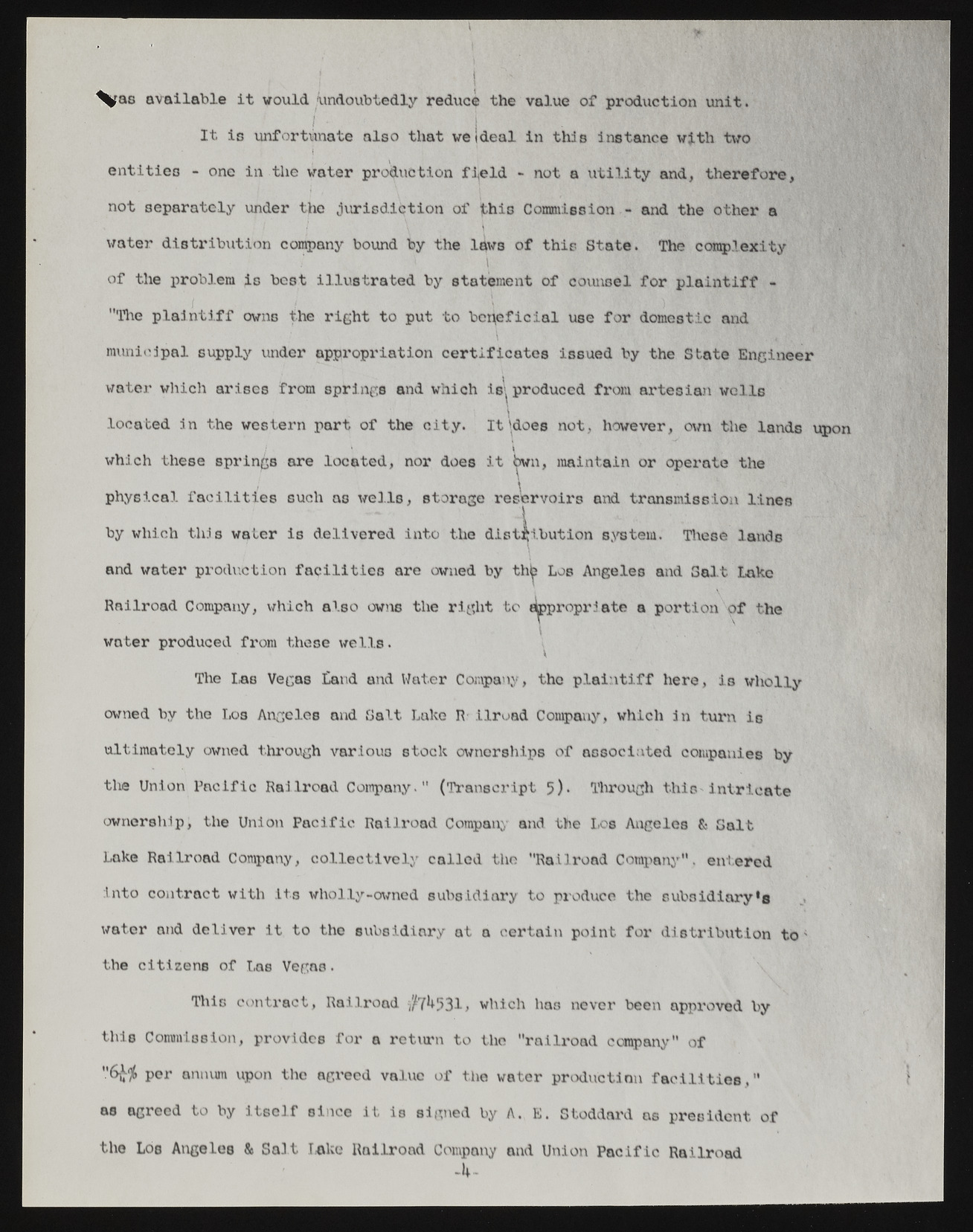Copyright & Fair-use Agreement
UNLV Special Collections provides copies of materials to facilitate private study, scholarship, or research. Material not in the public domain may be used according to fair use of copyrighted materials as defined by copyright law. Please cite us.
Please note that UNLV may not own the copyright to these materials and cannot provide permission to publish or distribute materials when UNLV is not the copyright holder. The user is solely responsible for determining the copyright status of materials and obtaining permission to use material from the copyright holder and for determining whether any permissions relating to any other rights are necessary for the intended use, and for obtaining all required permissions beyond that allowed by fair use.
Read more about our reproduction and use policy.
I agree.Information
Digital ID
Permalink
Details
More Info
Rights
Digital Provenance
Publisher
Transcription
%fas available it would undoubtedly reduce the value of production unit. I ' It is unfortunate also that we ideal in this instance with two entities - one in the water production field - not a utility and, therefore, not separately under the jurisdiction of this Commission - and the other a water distribution company bound by the laws of this State. The complexity ' V. of the problem is best illustrated by statement of counsel for plaintiff - "The plaintiff owns the right to put to beneficial use for domestic and l ; ‘ ’ - , ? p f l l municipal supply under appropriation certificates issued by the State Engineer water which arises from springs and which is\ produced from artesian wells located in the western part of the city. It'.does not, however, own the lands upon L - k which these springs are located, nor does it own, maintain or operate the J \ physical facilities such as wells, storage reservoirs and | transmission lines by which this water is delivered into the distribution system. These lands and water production facilities are owned by thb Los Angeles and Salt Lake Railroad Company, which also owns the right to appropriate a portion of the l water produced from these wells. The Las Vegas Land and Water Company, the plaintiff here, is wholly owned by the Los Angeles and Salt Lake R ilroad Company, which in turn is ultimately owned through various stock ownerships of associated companies by the Union Pacific Railroad Company." (Transcript 5)• Through this intricate ownership; the Union Pacific Railroad Company and the Los Angeles & Salt Lake Railroad Company, collectively called the "Railroad Company", entered into contract with its wholly-owned subsidiary to produce the subsidiary's water and deliver it to the subsidiary at a certain point for distribution t o ' the citizens of Las Vegas. This contract, Railroad $7^531> which has never been approved by this Commission, provides for a return to the "railroad company" of per annum upon the agreed value of the water production facilities." as agreed to by itself since it is signed by A. E. Stoddard as president of the Los Angeles & Salt Lake Railroad Company and Union Pacific Railroad 4 -

